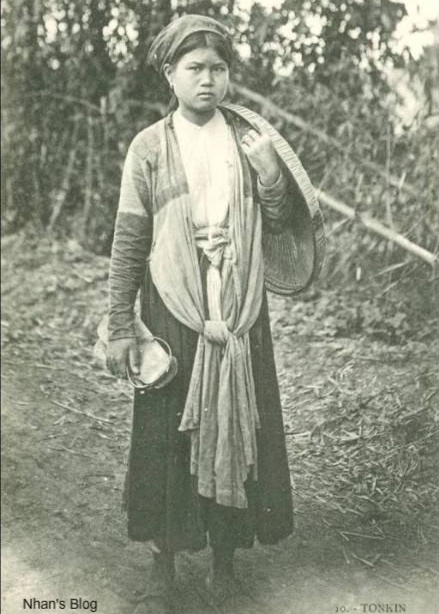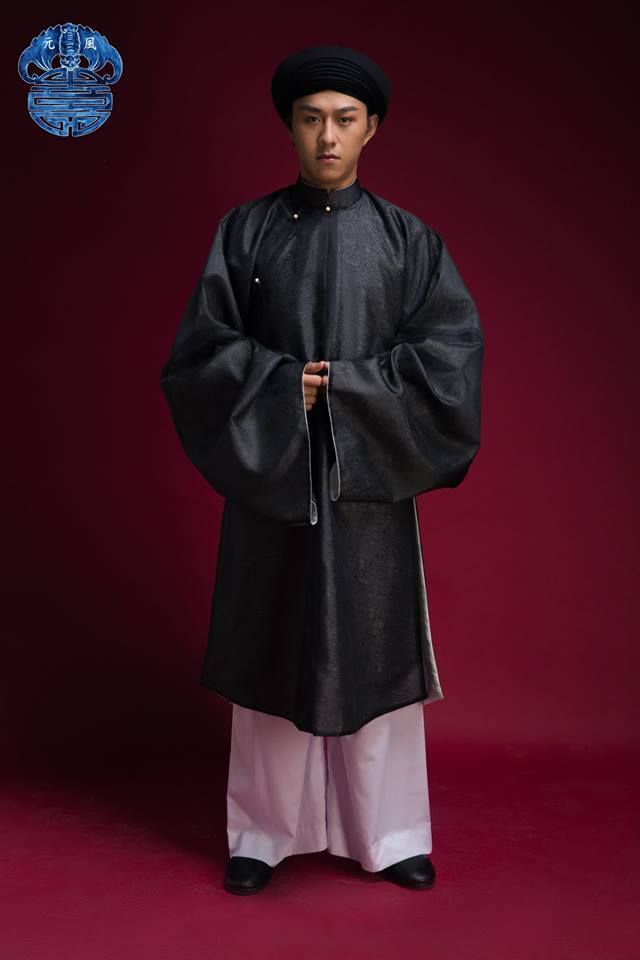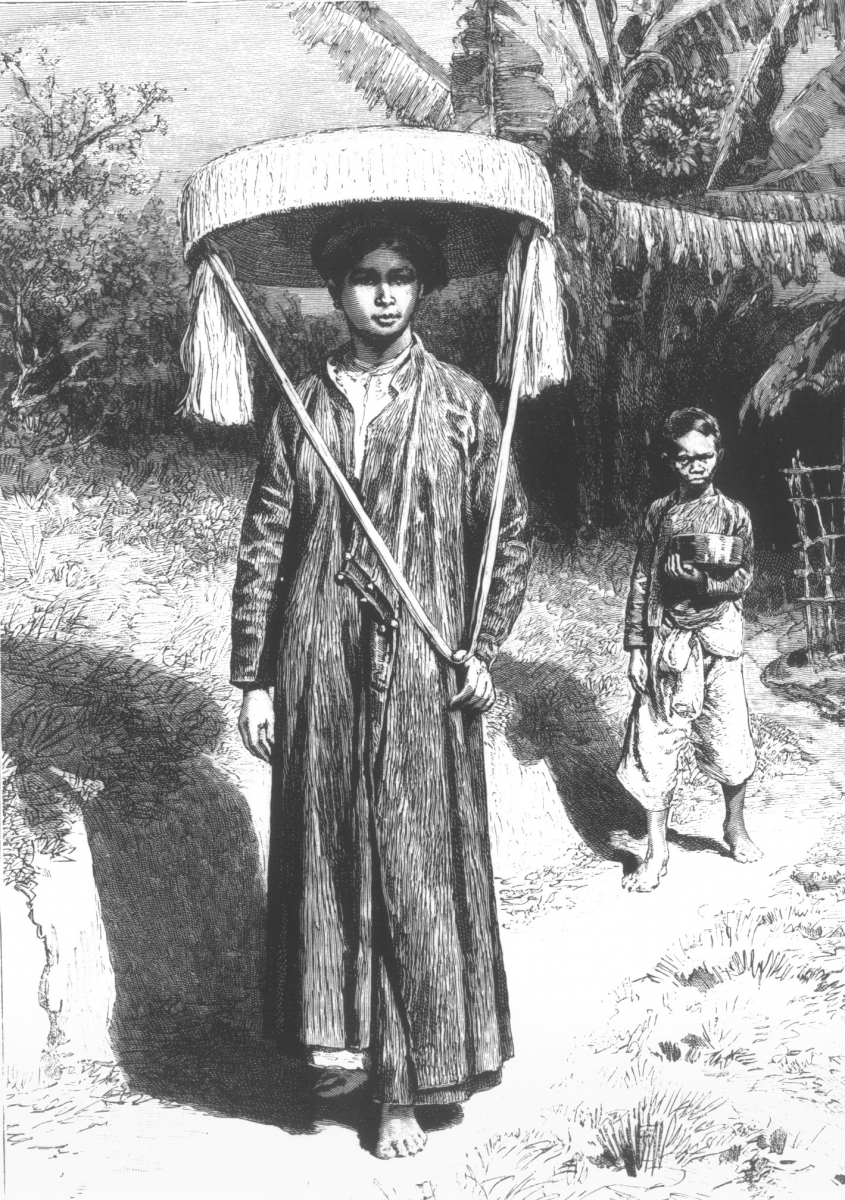Áo tứ thân – áo ngũ thân
“Áo tứ thân – áo ngũ thân” (18th Century – early 20th Century)
Because of the work of farming or trading, Giao Lanh Ao Dai was reduced into ‘áo tứ thân’ (which means a 4-long-flap dress). “Áo tứ thân” consisted of a flowing outer tunic with two flaps split at the waist, and a long skirt worn under the tunic, Yem- an ancient bodice worn as an undergarment by women and a silk sash tied at the waist as a belt. As the costume for working class, ‘áo tứ thân’ was usually made from dark fabric to avoid getting dirty. On the other hand, urban women who were usually not working chose to dress in ‘áo ngũ thân’ (which means a 5-long-flap dress) . It had its two front flaps sewn together. The two back flaps were also sewn together and a baby flap hidden underneath the front flap. They wore “áo ngũ thân” to distinguish between women in rich families with those from the working class. This collared dress was still very popular until the 20th century.


